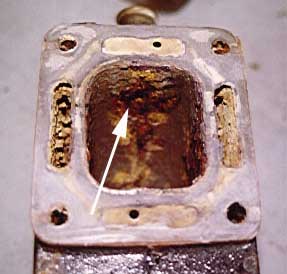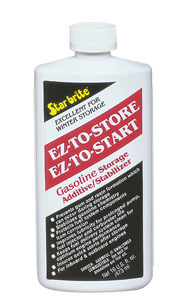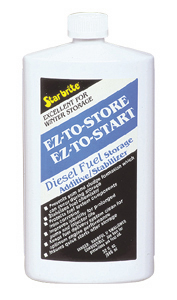PLEASE
READ THIS ARTICLE ON WINTERISING YOUR VOLVO PENTA, MERCRUISER, OR
OTHER MARINE ENGINE
|
||
| Winterisation
of any engine, but especially inboards, is probably the singular most
important operation to be carried out annually to ensure the long life
of your engine. First of all lets have a look at some of the most common problems that manifest themselves after a long lay-up
Lets
examine some of the reasons these problems occur. Alternator failure, Usually similar to Starter failure above caused by corroded terminals and windings also siezed bearings internally, caused by spending the winter in a damp environment 'Engine tight to turn over' although this is a problem in its own right it can also cause starter failure as above especially with the later permanent magnet starters fitted to many engines. The engine 'tightness' can be caused by a number of problems some of which are,- Partial or total siezure due to rust on the cylinder bores, or Valves not sliding correctly due to corrosion on stems, or it could also be caused by a fault in the drive train especially with sterndrive engines, for instance, siezed gimbal bearing or bearings in the sterndrive siezed (both due to corrosion of the bearings) all could cause the engine to feel tight Belts screeching or shredding during the first runs of the season, this is a classic in the spring, over the winter corrosion has taken place on the crankshaft pulley due to damp bilges etc, this in turn acts like an abrasive on the vee belts and wears them on the sides, thus causing them to start slipping and ultimately to shred through, this usually starts as the Alternator kicks in or the power steering is used. Quite often this can lead to a major engine overheat and the subsequent problems. Sterndrive failure, this is usually caused by salt water ingress into the drive during the previous season, and as the water separates out from the oil during the winter, the salt water sits on the bearings and siezes them up, it also sits on the gear teeth and causes pitting, all of these things contribute to premature drive failure early in the season. Emulsified or creamy oil and Deposits in the rocker cover, these are usually caused by water ingress into the engine itself, usually caused by either a cracked block or head, corroded cylinder block or head or corroded exhaust manifold(s) and very occasionally corroded inlet manifold. these deposits are usually accompanied by rough running and occasionally complete 'Hydraulic lock' where there is so much water in the cylinder that the piston cannot travel upwards at all, (this is usually accompanied by starter motor failure)
This image shows the inside of an average exhaust manifold, the arrow points to a hole. Buy
replacement Manifolds to fit Volvo Penta, Mercruiser and OMC engines
here Misfire,'spitting' and erratic running, these could all be associated with corrosion problems as above, ie rust on the valves causing them to 'stick' or cooling water finding its way into the engine.These problems can also be caused by water in the fuel caused by condensation in the tank, gummy deposits in the carburettor / injection system, or damp in the ignition system Noise from Gimbal Bearing or transom area, This is a complaint specific to engines with sterndrive legs and is the bearing which supports the drive shaft as it passes through the back of the boat between the sterntdrive leg and the inboard engine, this is usually caused by water entering into the protective drive bellows either from them being perished or from corrosion of the transom shield (gimble housing) casting. To help prevent these and other Springtime nightmares follow our winterisation checklist as follows This Assumes that the boat is out of the water and a hosepipe is available.
To Buy Winterising kits click here
Many Marine engineering companies make a policy of removing the sterndrive during the winterisation process, this is prudent in some ways as the condition of the universal joints and drive bellows can be ascertained, however, for the average person laying up a sterndrive boat this is not always necessary, as long as you are happy that the bellows are in good condition and have not been leaking.
If the boat has to be left on a freshwater mooring, there is no option but to drain down the block, and manifolds, and if possible leave a heater in the engine bay. Some owners like to remove the air cleaner and tape over the air intake, this is also a matter of preference, It certainly cannot do any harm. Oil changes should be done as often as possible, but if the engine has only done low hours since the last change as long as the oil is still clean it is not necessary to change it every time. FINALLY, LUBRICATE LUBRICATE LUBRICATE. SPRAY THE WHOLE ENGINE IN A PROPRIETORY WATER DISPLACING LUBRICANT LIKE WD40, DUCK OIL OR SIMILAR PRODUCT. AND IF ALL IS WELL ALL YOU SHOULD NEED TO DO IN THE SPRING IS REPLACE THE BELTS, CONNECT THE BATTERY AND TURN THE KEY. For more information or to purchase winterisation products call us NOW on 01872 863777 |
||


